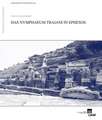Goldfunde Aus Dem Artemision Von Ephesos: Forschungen in Ephesos, cartea 12/5
de Limba Germană Paperback
Preț: 972.22 lei
Preț vechi: 1262.61 lei
-23% Nou
Puncte Express: 1458
Preț estimativ în valută:
186.04€ • 198.94$ • 155.11£
186.04€ • 198.94$ • 155.11£
Indisponibil temporar
Doresc să fiu notificat când acest titlu va fi disponibil:
Se trimite...
Preluare comenzi: 021 569.72.76
Specificații
ISBN-13: 9783700139478
ISBN-10: 3700139470
Pagini: 376
Dimensiuni: 211 x 295 x 25 mm
Greutate: 1.38 kg
Editura: Austrian Academy of Sciences Press
Seria Forschungen in Ephesos
ISBN-10: 3700139470
Pagini: 376
Dimensiuni: 211 x 295 x 25 mm
Greutate: 1.38 kg
Editura: Austrian Academy of Sciences Press
Seria Forschungen in Ephesos








